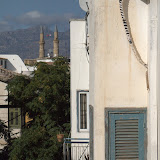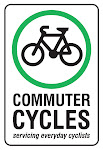
You know you’ve been cycle touring for a while when barks, barbs and brothels become a little mundane.
Avid followers of the blog (thanks, Dad) will remember our various entanglements with canines along the way. We gathered Mongolian rocks and harsh words to throw at the beasts that would launch from their gers towards us at a blistering pace. We learnt that stopping to square-off with a defensive dog was more effective than flight, unless you can hit about 35-40kph pretty quickly. Some cyclists have reported using water pistols with an ammonia or pepper component, but we found that barking back (we still do it in Mongolian) and keeping a rock in reserve was pretty effective. That is, until we got to Turkey.
Turkish dogs, deservedly, have a fearsome reputation amongst cycle tourists. It’s not just that they are larger, or that they team up with rock-throwing kids in the eastern provinces. From our experience, they tend to hurtle silently and viciously up to the bike, where a snarl suddenly alerts you to their presence. They are also persistent, often unleashed and they ignore rocks. That’s one weapon neutralized.
The roaming dog is usually not a threat, having no property to defend. But there is definitely more than one Turkish villager who has been entertained by the sight of two cycle tourists barking furiously back at their feisty home-guarding pooch.
As we hit Cyprus, my defences were still on high alert when assailed by a flurry of barking. Stopping with a screech of brakes I turned to face the source of this challenge and found a trio of white fluffy faces tumbling and yapping all over each other behind a gate. Ah, British-style lap dogs. Annoying, but no threat. Welcome to island life.
Having escaped the thorny burrs of central Anatolia, inner tubes now more patch than original rubber, we cautiously felt our way along the narrow verges of Cyprus checking our tyres frequently for any offending prickles. As we crested the Pentadaktylos (five fingers) mountain range that separates Lapithos and the coast from the central plains of Cyprus we began to feel safe. The tribulus terrestris does not reside here, we thought.
An easy ride to the capital Nicosia was followed by an even easier passage through the UN buffer zone that separates the North from the South. We began our city accommodation search, winding through the narrow paved streets and souvenir stalls, noticing along the way a slow leak declaring itself in Andrew’s back tyre.
Amazingly, it was not until the next day that we seriously looked for and quickly found the source of this leak. A 3cm long metal spike plunged deep into the tread. I don’t think the Kevlar-lined tyres could be criticized for letting that one through.
Of course, now we were in Europe, the price for accommodation had risen accordingly. Not for the first time, we found that the market for cycle-tourist accommodation overlapped with those that offer an hourly rate. In Korea, we had love-motels, in Rubstovsk, all accommodation roads led to houses of ill-repute, and in Nicosia we had Tony’s Bed & Breakfast. Not so raunchy at first glance, and we weren’t the only budget travelers in town. But there was a distinctly high turnover in the mornings, particularly on Sunday. Whether this meant there was time to make it to church afterwards to repent, I never worked out.
Still, our second floor foliage-draped balcony offered a homely blue-shuttered respite from the crowds below, a place to repair the latest puncture and a blissfully dog-free zone. What more could you want?
Cycling:
Lapithos to Nicosia: 47km, 2 border crossings and one UN buffer zone
Cycling:
Lapithos to Nicosia: 47km, 2 border crossings and one UN buffer zone
 |
| Nicosia |





0 comments:
Post a Comment